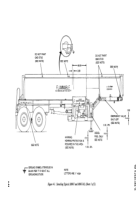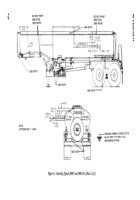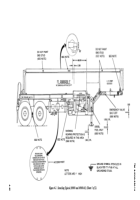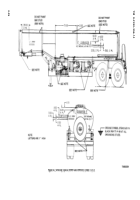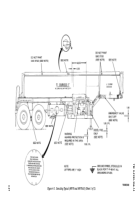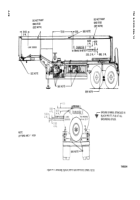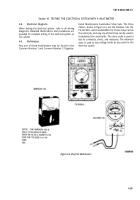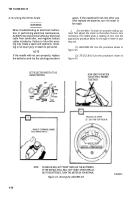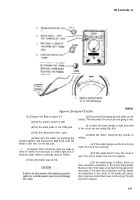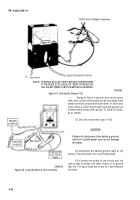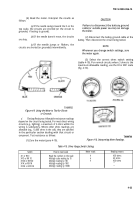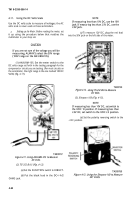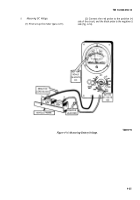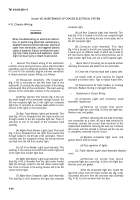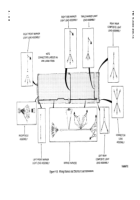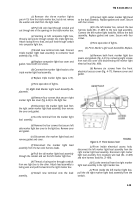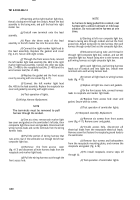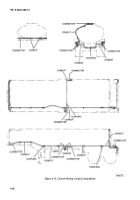TM-9-2330-356-14
SEMITRAILER, TANK: 5000 GALLON, BULK HAUL, SELF LOAD/UNLOAD M967 AND M967A1; SEMITRAILER, TANK: 5000 GALLON, FUEL DISPENSING, AUTOMOTIVE M969 AND M969A1; SEMITRAILER, TANK: 5000 GALLON, FUEL DISPENSING, UNDER/OVERWING AIRCRAFT M970 AND M970A1
TECHNICAL MANUAL; OPERATOR’S, UNIT, DIRECT SUPPORT, AND GENERAL SUPPORT MAINTENANCE MANUAL
OCTOBER 1990
TM-9-2330-356-14 - Page 169 of 528
TM 9-2330-356-14
(4) Read the meter. Interpret the results as
follows:
(a)
If the needle swings toward the 0 on the
top scale, the circuits are shorted (or the circuit is
grounded, if testing to ground).
(b)
If the needle doesn’t move, the circuits
are okay.
(c)
If the needle jumps or flickers, the
circuits are shorted (or grounded) intermittently.
TA099765
Figure 4-9. Using the Meter to Test for Shorts
or Grounds.
d.
Testing Resistance.
Allowable resistance readings
depend on the circuit being tested, For most direct wiring
circuits (e.g., lighting), a maximum of 3 ohms within the
wiring is satisfactory. Where other ohms readings are
allowable (e.g., 10,000 ohms in the coil), they are specified
in the particular section dealing with that circuit or
component. Test resistance as follows:
(1) Zero the meter (para 4-10).
CAUTION
Failure to disconnect the battery ground
cable (or outside power source) can damage
the meter.
(2) Disconnect the battey ground cable at the
battey. Then disconnect the circuit being tested.
NOTE
Whenever you change switch settings, zero
the meter again.
(3) Select the correct ohms switch setting
(table 4-10). For normal circuits where 3 ohms is the
maximum allowable reading, use the Xl or RX1 scale
(fig. 4-10).
TA099766
Figure 4-10, Interpreting Meter Readings.
Table 4-10. Ohms Range Switch Setting.
Switch
How to read scale
Meter reads
Reading means
X1 or RX1
Read the number on the scale
4
400 ohms
X1O or RX 1O
Multiply scale reading by 10
4
40 ohms
X1OO or RX1OO
Multiply reading by 100
4
400 ohms
X1K or RX1K
Multiply reading by 1000
—
X1OK
or RX1OK
Multiply reading by 10000
—
4-33
Back to Top

